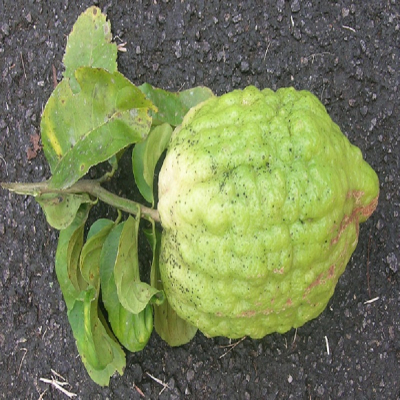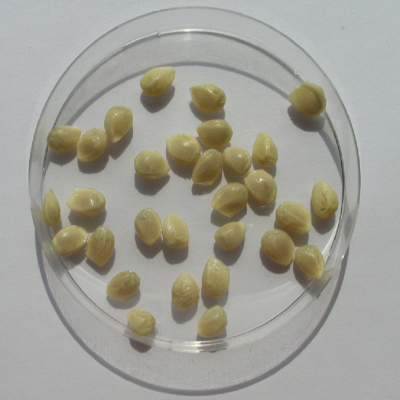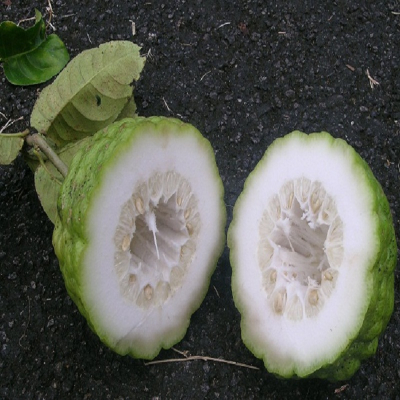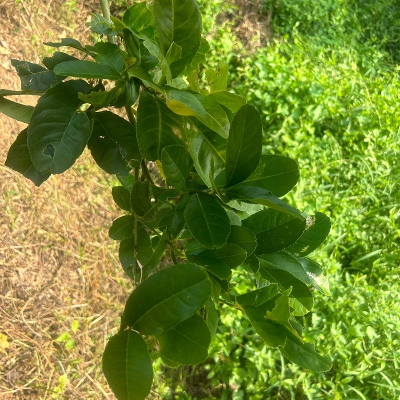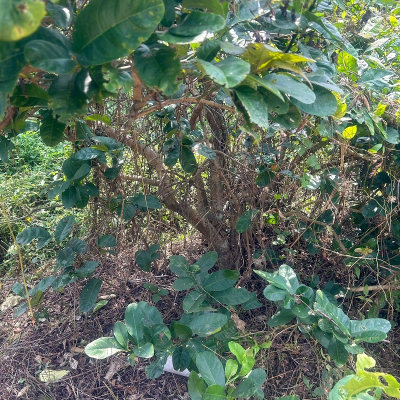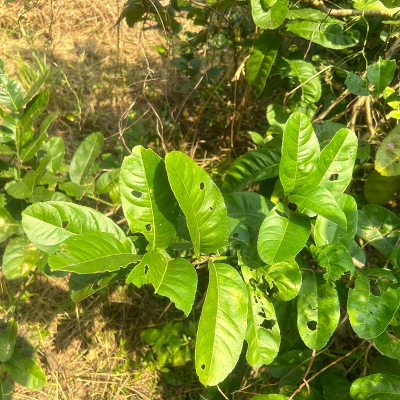Distribution and habitat: Throughout in forests along streams, up to 1200 m elevation
Botany: An evergreen armed shrub, 1.8-3.6 m high with straggling thorny branches and smooth yellowish brown bark.
- Leaves: Oblong or elliptic with acute or rounded apex, coriaceous, glabrous, pellucid-punctate, dull dark green above. Petiole 5-10 mm long.
- Flowers: 3.8-4.5 cm diameter, white tinged with pink, scented, in axillary cymes.
- Fruits: Large berries oblong or globose, fleshy, rind thick, rough, irregular or warted, yellow when ripe. Seeds few and smooth.
Properties: Anodyne, laxative, anthelmintic, diuretic, astringent, stimulant, anti-emetic, appetizer, emollient, anti-inflammatory.
Chemical constituents: Fruit juice contains citric acid ,volatile oil containing citral, limonene, linalool, linalyl acetate, terpinol and cymene; perfumed essential oil, composition of petilgrain oil; leaf contain coumarins, bergapten, citropten; bark; xanthyletin.
Uses: Used in constipation, dental caries, helminthiasis, vomiting, renal and vesical calculi, tumors, pharyngodynia, leprosy, skin diseases, stimulant, anorexia, abdominal disorders, high cough, tumours, inflammations, amenorrhoea, and haemorrhoids
Propagation: Seeds

